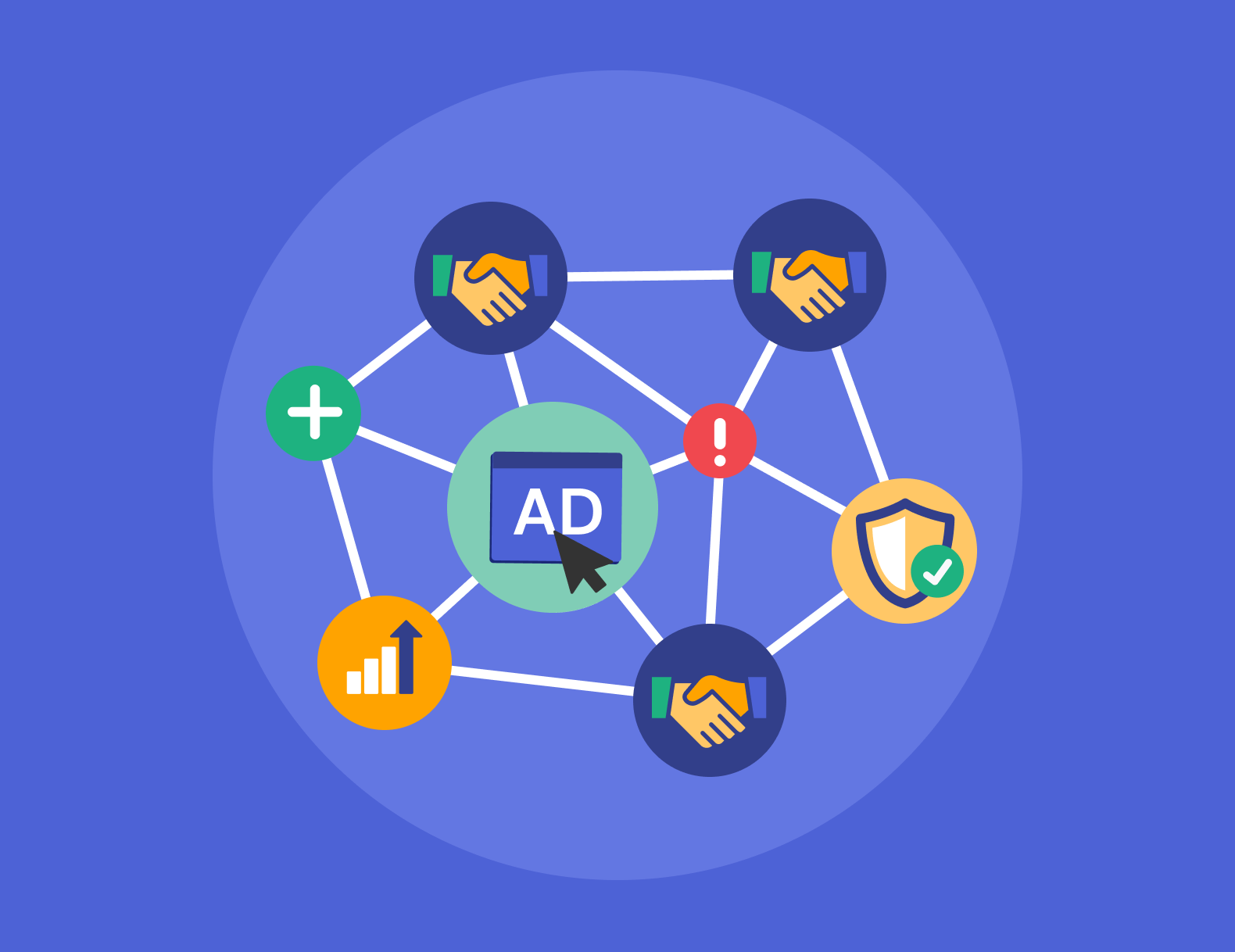Affiliate Marketing in 2025: Growth, Risk, and the Case for Smarter Protection

Affiliate marketing continues to be one of the most effective acquisition channels in digital advertising. And as we move through 2025, the opportunity comes with growing risks. Affiliate fraud is eroding budgets, distorting campaign data, and leaving advertisers questioning the integrity of their partnerships. The brands that win will be those able to scale affiliate programmes while putting smarter protections in place.
Why affiliate marketing is growing in 2025
Key trends driving affiliate programme expansion
Affiliate marketing has matured into a mainstream performance channel. Retailers, financial services, travel brands, and gaming operators are allocating bigger budgets to affiliates because the model is inherently measurable: advertisers pay only for outcomes like sales, signups, or first-time deposits.
2025 is seeing renewed growth for three reasons:
- Diversification of acquisition strategies as brands move away from reliance on paid search and social
- Creator and influencer partnerships blending with traditional affiliates to capture attention in new ways
- Data-driven tracking through modern affiliate management platforms that give advertisers more granular control
Why advertisers continue to invest in affiliate partnerships
Affiliate partnerships align incentives. Publishers are motivated to deliver conversions, while advertisers can scale with lower risk compared to CPM or CPC models. This has made affiliates especially attractive for eCommerce and subscription businesses where customer lifetime value is high.
Predictions for spend and ROI this year and beyond
Industry forecasts suggest global affiliate marketing spend will surpass $37.3 billion in 2025, up from $32.3 billion in 2024. U.S. spend alone is forecast to reach $11.2 billion in 2025, growing to $12.4 billion in 2026, and $14.8 billion by 2028. And ROI remains strong with brands earning $12 to $15 for every $1 spent, making it one of the highest-performing channels in digital marketing.
The hidden risks undermining affiliate ROI
What affiliate fraud looks like in practice
Affiliate fraud takes many forms. Fake clicks, manipulated postbacks, or recycled users all undermine ROI. Fraudsters exploit the gap between ad tech platforms and affiliate tracking systems, claiming credit for conversions they never drove.
👉 Want a quick breakdown of how affiliate ad fraud works? Watch our 30-second explainer.
Cookie stuffing, fake signups, and postback abuse in 2025
- Cookie stuffing loads affiliate cookies without genuine engagement, redirecting commission for sales that would have happened organically
- Fake signups and bots flood funnels with non-existent leads, wasting budget and sales team resources
- Postback abuse manipulates conversion signals so affiliates take credit for users acquired through other paid channels
The real cost of fraud on budgets and data accuracy
Affiliate fraud cost marketers over US$84 billion globally in 2023, accounting for 22% of all digital ad spend. Every fraudulent conversion eats into budget, but the bigger issue is data pollution. When attribution models count fake users as genuine, optimisation signals are corrupted. This leads to wasted commissions, flawed bidding strategies, and inflated customer acquisition costs.
Curious about what this looks like in your own campaigns? Our Affiliate Audit shows exactly where invalid traffic is draining budgets and skewing signals.
The brand safety and compliance challenge
Affiliate fraud doesn’t just drain budgets, it puts compliance and brand safety on the line.
- Misleading creatives can misrepresent your offer, driving fake or non-compliant traffic that damages trust with both users and regulators.
- Non-compliant media buying from banned geos or restricted sources risks reputational damage, regulatory penalties, and strained partnerships.
Protecting spend is critical, but ensuring campaigns remain compliant and brand-safe is equally important. Advertisers need systems that safeguard against invalid activity while also enforcing compliance standards across affiliates.
Why old approaches no longer work
The limits of manual monitoring and legacy tools
Affiliate managers cannot keep pace with modern fraud at scale. Manual reviews are too slow, and legacy filters lack the sophistication to catch evolving tactics.
How fraudsters adapt faster than static rules
Fraudsters operate like growth hackers. They test, learn, and adapt. Static rules designed to block known patterns quickly become obsolete. By the time fraud is detected, the damage is done.
Why flawed signals lead to wasted commissions
When you rely on incomplete or delayed fraud detection, you pay out commissions that should never have been earned. This drains budget and incentivises bad actors to scale their schemes further.
Smarter protection for affiliate marketing
The role of independent verification in partnerships
Advertisers need an independent source of truth to verify traffic quality and conversions. Affiliate click fraud protection ensures commissions are tied only to genuine, incremental activity. This creates accountability and transparency between advertisers and affiliates.
How validated data builds trust and efficiency
With affiliate click fraud protection blocking threats like click injection, non-compliant tracking, and low-value incentivised conversions in real time, marketers gain a clean dataset that reflects genuine performance. Trust strengthens with high-value affiliates, disputes are minimised, and both sides can see the same verified metrics that drive long-term partnership growth.
Scaling growth on clean, transparent metrics
When invalid traffic is removed, budgets are freed to reinvest in high-performing affiliates. Campaigns scale faster, ROI improves, and customer acquisition strategies become sustainable. Smarter protection is not just about blocking fraud, it is about unlocking growth.
Download our Affiliate Traffic Quality Audit Report to see the kind of insights you may be missing from invalid clicks blocked to ROI unlocked.
Conclusion
Growth is real, but so is the risk
Affiliate marketing in 2025 remains a powerful growth channel. But unchecked click fraud poses a serious threat to ROI and credibility.
Fraud prevention is no longer optional
Fraudsters are faster, bolder, and better equipped than ever. Advertisers cannot afford to rely on outdated defences.
Clean data future-proofs affiliate marketing
With proactive affiliate click fraud protection in place, marketers can focus on growth with confidence. Affiliate marketing thrives on trust, and the brands that protect their data will own the future of the channel.
👉 Want to see the risks hiding in your own programme? Start with a free Affiliate Audit to uncover invalid traffic and measure its impact.
FAQs & Key Takeaways
- How much will affiliate marketing spend grow beyond 2025?
Global affiliate marketing spend is projected to reach $42.6 billion in 2026 and $48 billion in 2027, with U.S. spend rising to $14.8 billion by 2028. - How big is the problem of affiliate fraud today?
Affiliate fraud drained more than US$84 billion in 2023, representing over 22% of digital ad spend. Without fraud prevention, marketers risk losing a significant share of their budgets to invalid activity. - What types of affiliate fraud are most common in 2025?
The main threats include cookie stuffing, fake signups, postback abuse, and bot-driven traffic. These tactics inflate commissions and distort attribution models, making campaign optimisation unreliable. - Why are manual reviews and legacy tools not enough?
Fraudsters adapt quickly, using AI bots and sophisticated evasion techniques. Manual reviews and static filters are too slow to keep up, allowing fraud to drain spend before it’s detected.
- How can click fraud prevention software improve ROI?
By blocking invalid traffic in real time and independently verifying conversions, click fraud prevention software ensures only genuine activity earns commission. This protects budgets, strengthens affiliate trust, and supports scalable growth.
Get started - it's free
You can set up a TrafficGuard account in minutes, so we’ll be protecting your campaigns before you can say ‘sky-high ROI’.
Subscribe
Subscribe now to get all the latest news and insights on digital advertising, machine learning and ad fraud.








